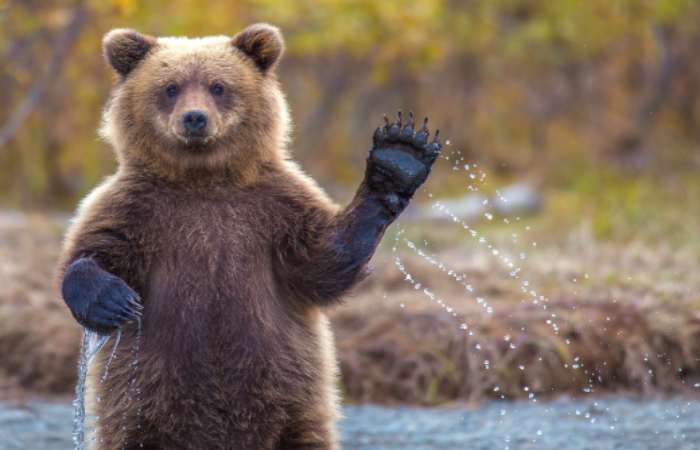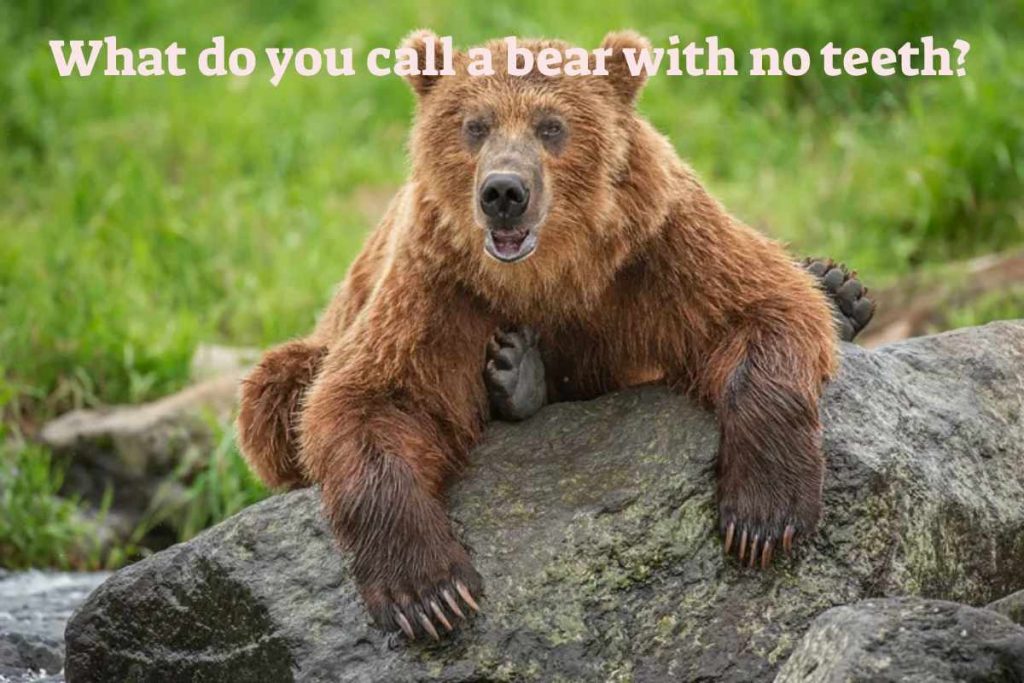Question: What do you call a bear with no teeth?
Answer: A gummy bear.
Table of Contents
What Do You Call A Bear With No Teeth Explanation
The soft, red part from which the teeth appear to emerge is called the gum. If you are loosing a tooth, your gums may bleed a little, but don’t worry.
A gummy bear is also a type of candy (also spelt gummy bear). I like how they feel when I bite into them.
A bear that has no teeth probably still has full gums.
This play on words makes it gummy and makes this joke hilarious.
Another Joke: Question And Answer
Q: What do you call a toothless grizzly?
A: A gummy bear.

Know About Bears
Bears are the carnivorous mammals of the Ursidae family.
They are classified as caniform, or canine, carnivores.
However, there are only eight bear species.
They are widespread and found in various habitats throughout the Northern Hemisphere and partially in the Southern.
Bears are found in North America, South America, Europe and Asia.
Common features of modern bears include large bodies with powerful legs, long muzzles, small rounded ears, shaggy fur, plantigrade feet with five non-retractable claws, and short tails.
While the polar bear is primarily carnivorous and the giant panda feeds almost exclusively on bamboo, the remaining six species are omnivores and have a varied diet.
Except for courting individuals and mothers with their cubs, bears are usually solitary.
They can be diurnal or nocturnal and have an excellent sense of smell.
Despite their heavy stature and clumsy gait, they are skilled runners, climbers, and swimmers.
Also, bears use shelters such as caves and logs as dens.
Most species occupy their burrows in winter for a long hibernation period of up to 100 days.
Bears have been hunted for their meat and fur since prehistoric times.
They have been used to harass bears and other forms of entertainment, e.g. B. to make them dance.
With their strong physical presence, they play a prominent role in the art, mythology, and other cultural aspects of various human societies.
Animals With No Teeth
Anteater
Giant anteaters are insectivorous animals that live in the grasslands and rainforests of Central and South America.
They are also known as anteaters.
Due to their diet, these mammals are toothless and rely on their long tongues for food.
Anteaters eat up to around 35,000 termites and ants every day.
When feeding, giant anteaters flick their tongues more than 150 times a minute!
Giant anteaters have poor eyesight but rely on their sense of smell to find their next meal.
They used their sharp claws to make a hole in the anthill, after which they used their long, sticky tongues to catch ants.
However, the ants would fight back and prick the animal’s tongue, so anteaters usually don’t spend more than a few minutes feasting.
Turtles
Turtles are ancient reptiles well known for their bony shells. They are found in various habitats, but most of them live in Asia and North America.
Most tortoises are omnivores, meaning they eat both animal and plant foods.
The fastest turtle species on the land can reach speeds of up to 5 km/h!
Turtles are the only reptiles without teeth and use their powerful beaks to chew and tear up food before swallowing it.
Baleen Whales
Baleen whales are widespread cetacean species that live in the colder waters of Antarctica and the Arctic.
Firstly, these aquatic mammals feed on small fish and zooplankton.
During the feeding season (six months), baleen whales eat up to 4% of their total body weight per day.
Although they live in the ocean, baleen whales cannot breathe underwater and use their lungs for breathing!
Baleen whales use a special hunting method called filter feeding.
It means that they swim towards the prey with a huge open mouth and devour numerous small prey animals at once.
Then they filter the feed with their feeders, also called barbels.


